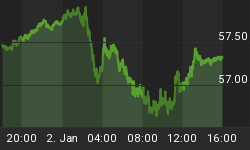A steadily growing drumbeat is sounding throughout financial mediadom; a major commodities blowout is in the cards. The most widely quoted reason is a U.S. recession that will sympathetically pop the commodity bubble.
It seems to me that these views are intertwined with a changed perception of how the economy works. A new paradigm if you will.
People used to pay homage to the notion of a business cycle, a somewhat predictable and even stately progression of economic growth leading to excess, followed by a corrective recession. After which the cycle would begin anew.
In today's bold new world, however, most investment observers overlay onto the business cycle a shifting series of rapidly rising - and falling -- sector-focused bubbles.
Because of their noticeable size and influence, it seems to me that the bubbles can mask the underlying business cycle to some extent. Case in point, we all easily recall the dot.com bubble but have a harder time recalling what the prevailing economic times were in the late 1990s. What came after the dot.com bust? Why, the housing bubble, of course.
Of course, bubbles have always occurred. But they appeared only periodically, every generation or so. Prior to the dot.com bubble that heralded in this new era, economic activity was more broadly distributed. When times were good, the sectors that normally benefited, all benefited in something of a range.
Today, however, while most remain somewhat range bound, a single sector appears, Godzilla-like, to cast a shadow over the broader financial landscape. It is that sector that then receives the lion's share of the focus and the investment flows, quickly becoming a self-fulfilling prophecy.
Of late it has been the turn of the commodities to stalk the land. And, if you believe the pundits, it is time for the monster to be brought low. If not by Mr. Market alone, then with the help of the regulators with all their many WMDs (Weapons of Market Disruption).
Before commenting on whether or not I believe they may succeed, a brief observation on the origin of this new bubble era.
In my view, it is largely due to the massive amount of money in various forms sloshing around the globe, most of which emanates from the Quicky Print Fiat Money Machines which have been reliably chugging away at central banks around the globe for decades now.
One of the primary outcomes of this odd chapter in monetary history is that the notion of the value of money has been pretty much thrown out of the window... though not one person in a thousand understands that the game has changed.
For example, the Chinese are correct in thinking their reserves include 1.4 trillion foreign currency units, but that fact is increasingly disconnected from any reliable measure of future value.
Underscoring the point, 1 trillion U.S. dollar units set aside 5 years ago are today, adjusted for inflation, worth just $620 billion. But who can say what those 1 trillion units will be worth five years hence?
While it would require far more electro-ink than time allows for today, it is my contention that the utility of the fiat monetary system is beginning to fade. After all, at its core, the acceptance of unbacked money is an act of faith.
And people are losing faith in the fiat currency units they are being asked to accept in exchange for their many labors, or in return for their tangible assets -- and what is more tangible than commodities?
Back to the Bubble
So, are commodities merely the latest bubble, a bubble now resting up against a pin? Or is something else going on?
In my view, the explanation hinges on the difference between, say, a dot.com fantasy company run by a couple of twenty-somethings and, say, oil... the stuff you use to get to work in the morning... or to assure the icicles stay on the outside of your windows.
As much as you might enjoy the software offered by your favorite dot.com, when push comes to shove, you could probably manage without. Oil? Food? Good luck.
To a lesser or greater degree, the same acid test can be applied to the value-add of Bear Stearns and the other financial stocks versus, say, the iron that supports your local highway bridges. Or the copper that is so important to all manner of electronics.
Or even houses and condos bought on speculation by people who couldn't afford them versus the nickel needed to create the stainless steel that is everywhere.
It is my simple contention that while selected commodities can and will get ahead of themselves (and probably already have)... the underpinning reality for their higher prices has far more to do with the value of the currency units they are priced in than with some broader investment fad. To this date, I can count on one hand the number of friends of mine outside of the business circles I run with who have made any investments in commodities.
Add into the equation the clear supply and demand challenges for many of the core commodities and the bubble doesn't seem quite so bubbly.
Here's a picture of commodities against both the U.S. dollar and the major currencies (ex-dollar).

And gold?
Well, while useful in certain industrial applications, gold as a commodity has a unique utility - it is considered as tangible money the world over. It is portable, easily divisible, durable and unquestionably accepted around the world. In an environment of a global crisis in confidence in fiat money, gold will provide a critical function that will only grow in importance in the months and years just ahead.
In short, the occasional corrections aside, this show is far from over.
David Galland is the managing director of Casey Research, LLC, publishers of BIG GOLD, a unique publication dedicated to providing actionable research on producing and near-production gold and silver companies. To learn more about our 3-month, risk-free trial offer with 100% money-back guarantee, click here.
















